By,
Ms.Mahima Malik (student)
B.Design (Textile Design)
Dr. Vandana Jaglan (Principal)
Satyam Fashion Institute
The art of embroidery is deeply rooted in the cultural history of Afghanistan as well as India, which unites the two countries beyond boundaries. Embroidery work is traditionally done by women and girls in Afghanistan. The Afghan technique involves counting each minute thread in the woven fabric to develop patterns that are symmetrical, evenly spaced and perfectly matched. Unlike other forms of embroidery, one cannot embroider it by printing design on fabric. Afghan embroidery directly develops designs onto fabric with perfection in stitchery. This often takes a physical toll on artisans as they have to carefully count each thread. The work is so intricate and precise that it is often mistaken for a weave or machine embroidery. This embroidery is done with silk, wool and cotton thread, used on hand woven cotton and woolen backgrounds.
Afghanistan and India have traditionally been strongly connected and friendly. For more than 17 years, hundreds of women and men who were trapped in the wars in Afghanistan, and robbed of their dignity and hope, escaped to India. India provided them much-needed refuge. Women are given the opportunity to be free and regain control of their lives in a foreign land.
Typical embroidery of Afghanistan is done with a frequent use of one dominant stitch on each piece; this stitch depends on the ethnic group of the embroiderer, denoting an integral part of their tribal life. The distinctiveness of Afghan embroidery lies in the way it is executed and by its small stitch size and length, which is sometimes reversible. It is done by counting each minute thread which runs in width or length-wise direction on the fabric. The fabric used is hand-woven khaddar, cotton or any available fabric that is dyed or un-dyed and the types of thread used were untwisted silk, acrylic or wool, metal and cotton.
Each artistic expression is a reflection of the artist’s surroundings; one must keep in mind that in the case of Afghanistan, the surroundings were fraught with war over decades. After the retreat of the Soviets, the Taliban movement started near Kandahar in 1994, with the aim of creating the most pure Islamic state in the world. Women and girls were prohibited from singing, listening to the radio or working outside their homes. Without employment and limited to their home, embroidery became the only means women had to support their families, especially for women who were sole providers and also as a gentle pastime for idle ladies.
The conditions of war robbed many of their mental health, freedom and quality of life. Some rebellious women and some women threatened by the Taliban, escaped towards India and to other neighboring countries. Today there are more than 2,00,000 Afghan refugees living in India, according to reports of the UNHCR and the World Bank. India has also been a helping hand in developing Afghanistan, in terms of infrastructure and education. Thereby, Afghanistan and India have always shared a peaceful and cordial relationship. Incidentally, India was the first country to recognize Afghanistan when it became a communist country in the 1970s.
Even in India, many Indian agencies are working hard to provide opportunities for refugees in the fields they are best in, to rebuild their lives in an alien land as it is a huge challenge for refugees to settle in another country, without knowing the local language and not being able to fall back on familiar support systems.
Stitches used:
The hallmark of afghan craft is known as “KHAMAK” (Fig.1) which is purely satin stitch done with untwisted silk yarns. Similarly there is other which is as follows:-Nafesa Dozi (Fig.2),Bati Dozi(Fig.3), Giraf(Fig.4), Gulatlaz(Fig.5), Shabaka Dozi(Fig.6,7), Zanjirak(Fig.8), Zali Dozi(Fig.9), Phukta Dozi(Fig.10). All of these embroideries are combination of satin, slanting, blanket, cross, chain, herringbone and Holbein stitches and their variations.
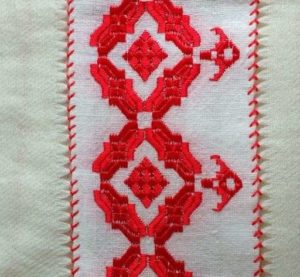
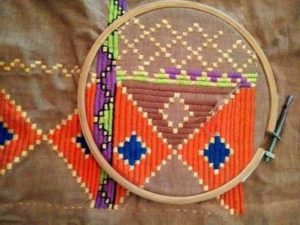
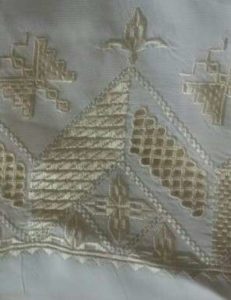
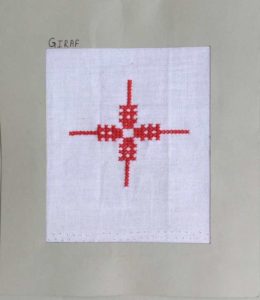
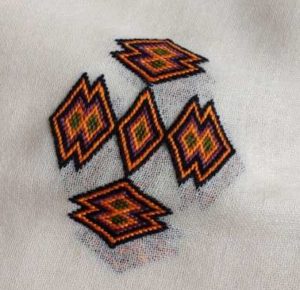
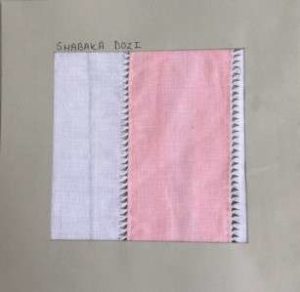
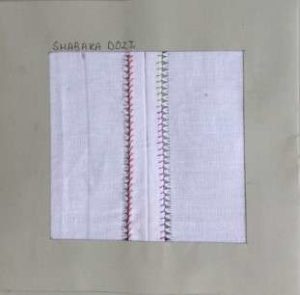
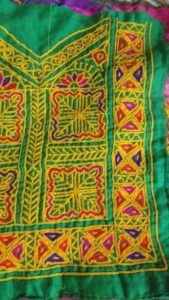

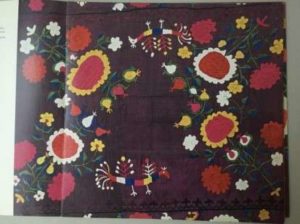
Source of fig.3 www.aralegal.in; Photo credit: Nayantara Raja
Source of fig.10: Paine Sheila, 2006
An optical illusion texture is created when stitches are worked in different directions i.e vertical, horizontal and diagonal.
Refugees lining in India practicing this craft are all women working. Under an initiative called “Atiqa”. Initially there were 3 women’s but now there are more than 8 women’s together thus empowering them and helped to develop social bonds. For continuous sustainable development of artisans NGO are playing a crucial role. MAP is India’s first refugee law center which is aiming to adopt innovative methods to expand the protection space or forced migrants and Atiqa which means antique is their initiative for afghan refugees to showcase their craft skill worldwide. Indeed empowered these women’s to stitch their story of struggle and cultural identity in each of their commercialized products and happily building a life she loves.
This research paper was first publised in Design Quest an Advanced Reasearch Journal on Design, Vol-2 Issue 1, Published by Satyam Fashion Institute, Noida.
Satyam Fashion Institutes Graduating Fashion Show – 2019